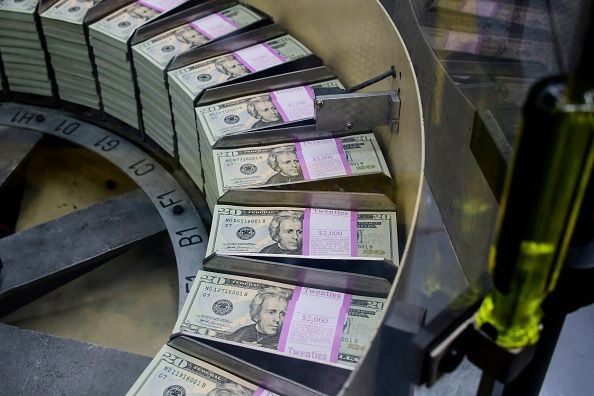3 Ways To Save On Healthcare Expenses

If you think healthcare is expensive, you're right. Americans spend $3.3 trillion on healthcare every year and unfortunately, spending is increasing. Controlling how much of your budget goes to healthcare isn't easy, but here are three tips that can help you rein in costs for insurance, doctor visits, and medications.
This article originally appeared in the Motely Fool
Tip No. 1: Use health savings accounts
If you're self-employed or get your healthcare insurance from the Affordable Care Act marketplace, then shopping around can result in lower premiums.
However, many people get their healthcare insurance through their employer, so comparison shopping isn't an option. If that's the case for you, consider pairing a health savings account (HSA) or flexible spending account with your workplace health insurance to save money.
These accounts have different rules, but they work similarly. You contribute a set amount of tax-free money per year to them, and then use those contributions to pay copays, deductibles, and out-of-pocket expenses.
The contribution limit for an HSA in 2019 is $3,500 for individuals and $7,000 for families, and participants aged 55 and up can contribute an additional $1,000 catch-up contribution, too. You can invest your HSA contributions, and any unspent money can be carried over into future years, but HSA's aren't offered by every employer because they must be paired with a high-deductible health insurance plan.
Unlike HSAs, FSAs aren't restricted to high-deductible plans, so they can be more commonly found in workplaces. Unfortunately, FSAs have a lower contribution limit and they're use-it or lose-it accounts. You can only contribute up to $2,700 in pre-tax money to an FSA account in 2019, and any money you contribute that's not spent in the plan year is forfeited -- so you have to plan carefully when using them.
Overall, payments or reimbursements for healthcare are tax-free as long as these accounts are used to pay for qualified medical expenses.
Tip No. 2: Go digital
Sometimes, you absolutely need to go to the doctor or the emergency room. If that's not the case, however, your cheapest option could be picking up your smartphone or logging onto your computer for a virtual doctor visit.
You can sign up online for services that offer access to board-certified doctors such as Doctor on Demand, a private company that's backed by investors including Goldman Sachs. After signing up for free, you can see if your insurance plan participates or what your cash cost for a visit will be. Often, you'll find this telehealth option is cheaper than a visit to urgent care.
If you work for a midsize-to-large employer, you might not need to sign up for such an account, though. Many insurance companies and self-insured businesses are including telehealth services as a benefit for their employees, and that means that you may already have access to this low-cost option. For example, Teladoc, the industry leader, is available to over 23 million people through 10,000 employers, plans, and health systems.
Telehealth services are offering more comprehensive care lately, too. For example, Teladoc operates Best Doctors, a virtual source for second opinions from specialists, and BetterHelp, which provides virtual mental-health services.
The convenience and cost savings associated with telehealth makes it a particularly good value, so ask your human resource department if you're not sure you have access to a telehealth service.
No. 3: Cash is king
If you need to fill a prescription, working with a mail-order service and getting a 90-day prescription instead of a 30-day prescription are proven cost-savings choices. However, if you prefer filling your prescription in person, it can be a good idea to ask the pharmacist for a cash price, rather than running the purchase through your insurance plan.
Insurance plans sort medications into different tiers on what's called a formulary, and if your medication isn't on the most favorable tier of that formulary, your out-of-pocket price could be markedly higher than your cash price. Some pharmacies automatically quote you the lowest price possible, but many don't, and that means that you're responsible for making sure you're not overpaying for your medicine.
The amount of money you can save by going the cash route depends on your insurance coverage and medication, but the savings can add up, especially if you fill multiple prescriptions per month. For instance, I recently saved $35 on a 90-day prescription for a common generic drug simply by asking to pay the cash price. On that medication alone, paying cash will save me $140 per year.
If you don't mind filling prescriptions at different pharmacies, shopping around can save you money, too. At GoodRx, you can see all the pharmacies in your area that can fill your prescription and the cost you can expect to pay. Some large chains, including Costco Wholesale, charge less to fill prescriptions than traditional pharmacies, too.
Overall, these strategies won't work for everyone in every situation, but using tax-advantaged money to pay for healthcare, embracing virtual visits, and using cash could save you big money over time.
Todd Campbell owns shares of Teladoc Health. His clients may have positions in the companies mentioned. The Motley Fool recommends Costco Wholesale and Teladoc Health. The Motley Fool has a disclosure policy.





















